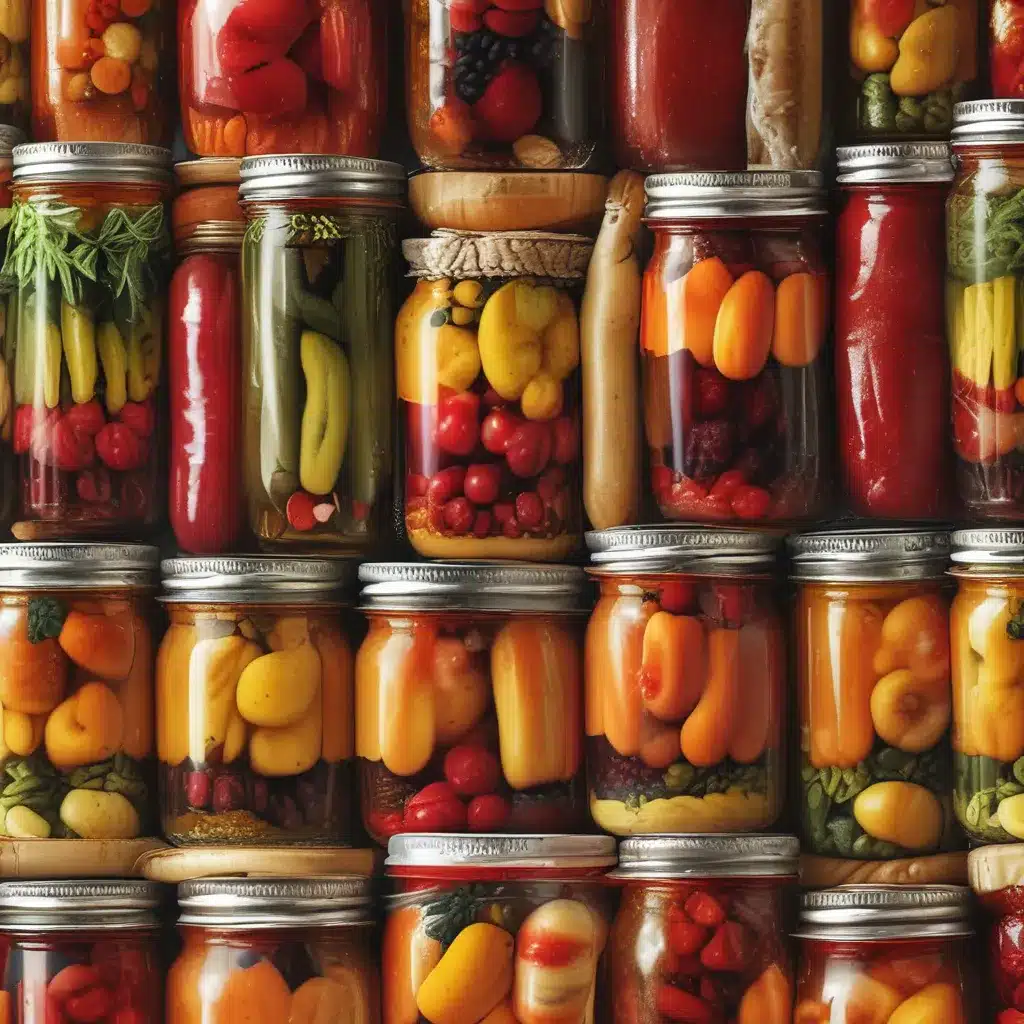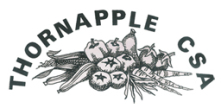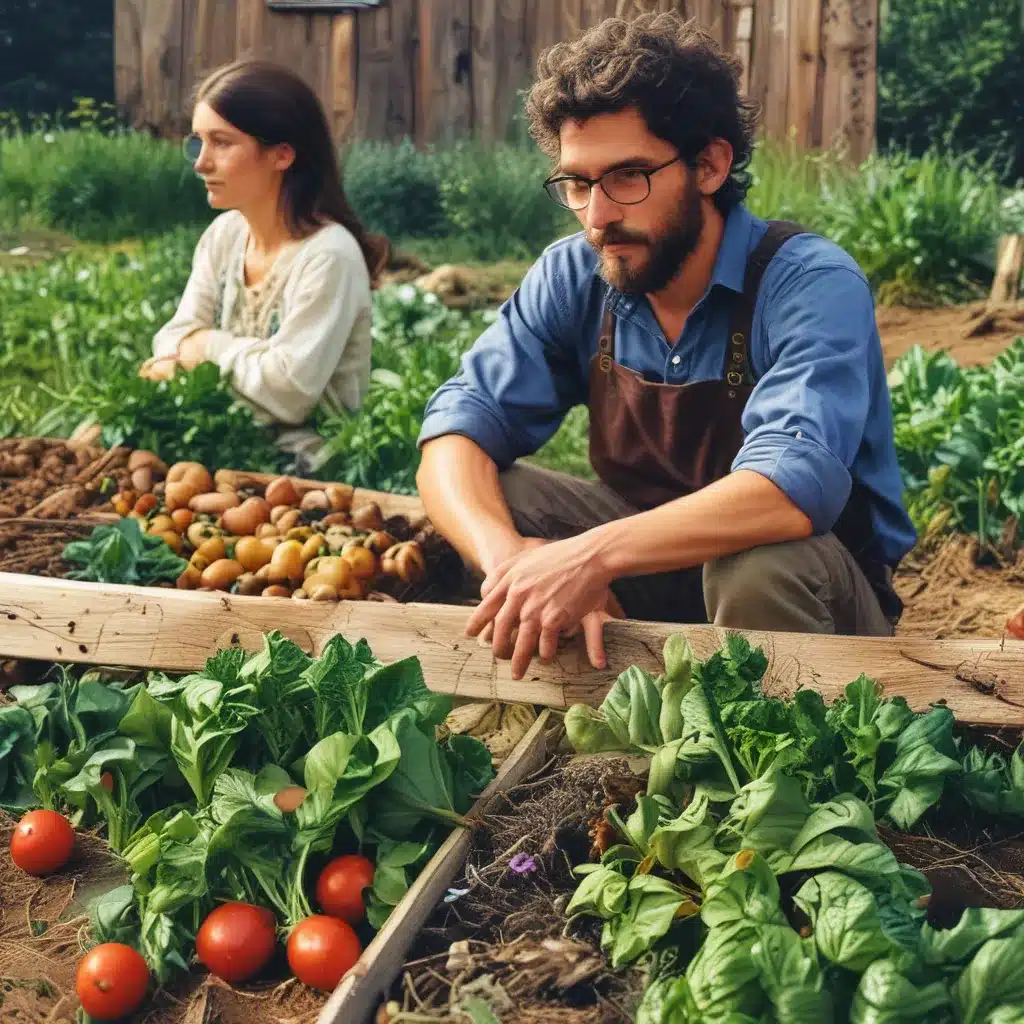
Giardiniera: The Gardener’s Delight
It was a sweltering summer evening, the kind where the air hangs thick and heavy, and the only thing that seems to offer any respite is the promise of a cool, crisp pickle. That’s exactly the scene that played out a few weekends ago, as my friend Caroline and I found ourselves in my kitchen, deep in a preserving project that would ultimately yield a bounty of vibrant, tangy giardiniera.
Giardiniera, which translates directly to “female gardener,” is one of my favorite ways to preserve the hodgepodge of vegetables that inevitably accumulate in my fridge each summer. It’s a delicious and beautiful way to make use of the plethora of summer produce, and the perfect strategy for tackling that inevitable surplus.
As Caroline and I hovered over our chopping boards, carefully dicing and slicing an array of fresh veggies, we found ourselves in a sort of rhythmic dance, working together to prep the ingredients for our preserves. The process of chopping everything to a uniform size can be a bit time-consuming, but with a friend by your side, it becomes a collaborative effort, and even a bit of fun.
While Caroline and I opted to can our giardiniera using a water bath method for a shelf-stable end product, this recipe would also make a fantastic quick pickle. The latter approach would skip the equipment and setup needed for canning, but the trade-off is that the pickles would need to be stored in the refrigerator – a precious commodity this time of year.
Preserving the Harvest: A Flexible Approach
Now, one of the things I love most about giardiniera is its flexible nature. This recipe is really more of a preservation strategy than a strict set of measurements. The key is to use whatever vegetables you have on hand – whether that’s an abundance of green beans from your backyard garden, a few lonely carrots lurking in the crisper, or a hodgepodge of summer squash and peppers.
I’ve listed some of the vegetables that I think work particularly well in this preparation, but I’m sure there are countless other options that could be equally delicious. The important thing is to chop everything to a similar size, whether you’re aiming for bite-sized chunks or a finer, relish-like consistency.
As Caroline and I discovered, our chopped veggies filled two large, 5-quart mixing bowls, and we ended up with 21 pints of pickled giardiniera. But the exact yield will depend on the quantities of your ingredients, the size of your jars, and how tightly you pack everything in.
To help ensure an accurate and safe measurement for your recipe, I recommend washing a few more jars than you think you’ll need. And when it comes to calculating the brine, a good rule of thumb is that the amount of brine per jar will be about half the total volume of the jar. For a pint-sized 16-ounce jar of giardiniera, that’s roughly 8 ounces of brine. Of course, it never hurts to make a little extra – you can always use any leftover brine for another preserving project.
Brine and Aromatics: The Flavor Powerhouses
Now, let’s talk about the brine and aromatics that take this giardiniera from good to great. The brine is a simple combination of equal parts water and distilled white vinegar, with a tablespoon of sea salt per quart of liquid. This tangy, slightly salty solution is the perfect canvas for the array of aromatic spices and herbs that we’ll be adding to each jar.
Speaking of those aromatics, I’ve found that a blend of bay leaves, garlic, oregano, coriander seed, black peppercorns, hot pepper flakes, yellow mustard seed, fennel seed, and celery seed creates a wonderfully complex flavor profile. And don’t forget the olive oil – a tablespoon per pint jar adds a rich, silky finish.
One optional step that can help ensure extra-crisp pickles is to toss the chopped vegetables with a generous amount of salt, cover them with water, and let them sit for 6 hours or even overnight before packing them into jars. This process, known as “salting,” helps draw out excess moisture and keeps the final product nice and crunchy.
Canning for Shelf-Stability
Now, for those of us who want to preserve our giardiniera for the long haul, canning is the way to go. It’s a bit more involved than the quick-pickle method, but the end result is a shelf-stable product that can be enjoyed for months to come.
The process begins with washing and sterilizing your jars, lids, and bands. I like to keep the jars warm in the oven while I work, and the lids can be simmered in a small saucepan of water until needed. Then, it’s time to fill those jars, packing the vegetables in tightly without bruising them, and leaving about a half-inch of headspace at the top.
Next up is the brine. Once you know how many jars you’ll be filling, you can calculate the amount of brine you’ll need, keeping in mind that it should be roughly half the total volume of the jars. Bring the brine to a boil, then reduce the heat to keep it warm as you ladle it into the packed jars, maintaining that all-important half-inch headspace.
With the jars filled, it’s time for the water bath. Carefully lower them into the preheated canner, making sure they’re submerged by at least an inch of water. Bring the water to a rolling boil, set a timer for 10 minutes, and let the magic happen. Once the time is up, turn off the heat and let the jars rest in the canner for 3-5 minutes before removing them with a pair of trusty jar lifters.
And there you have it – giardiniera fit for the shelves of any well-stocked pantry! Of course, I always recommend waiting a few weeks before cracking open those first jars, to allow the flavors to fully infuse. But once you do, you’ll be rewarded with a vibrant, tangy, and utterly delectable preserved harvest.
Preserving with Precision: The Importance of Measurements
Now, I know what you’re thinking – “But what if I don’t have the exact measurements for my ingredients?” Well, fear not, my friends. When it comes to canning and preserving, a little bit of math and some careful calculations can go a long way.
Let’s take a look at a few handy conversions that can help you navigate the world of home preservation:
| Measurement | Equivalent |
|---|---|
| 1 cup | 8 oz. / 1/2 pint |
| 2 cups | 16 oz. / 1 pint |
| 4 cups | 32 oz. / 2 pints / 1 quart |
| 4 quarts | 1 gallon |
| 3 teaspoons | 1 tablespoon |
| 4 tablespoons | 1/4 cup |
Armed with these conversions, you can easily figure out how much brine you’ll need for your particular batch of giardiniera, or any other preserving project you tackle. And remember, a little bit of extra brine is always better than running short!
Preserving the Harvest, Year-Round
As I look around my kitchen, I can’t help but feel a sense of pride and accomplishment. The shelves are stocked with jars of vibrant, tangy giardiniera, ready to be enjoyed throughout the year. But this is just the beginning of my preserving journey.
You see, at Thornapple CSA, we believe in making the most of every season’s bounty. From canning and pickling to drying and freezing, there are countless ways to savor the flavors of the harvest, even when the growing season has long since passed.
And let me tell you, there’s nothing quite like cracking open a jar of homemade preserves in the dead of winter, when the snow is piling high and the cold winds are howling outside. It’s like a little taste of summer, right there in your own kitchen.
So, whether you’re a seasoned canner or a complete novice, I encourage you to dive into the world of preserving. It’s a rewarding and satisfying process, and the payoff is a pantry full of delicious, seasonal treats that you can enjoy all year round. Who knows – you might even find yourself becoming a bit of a “female gardener” in the process!



